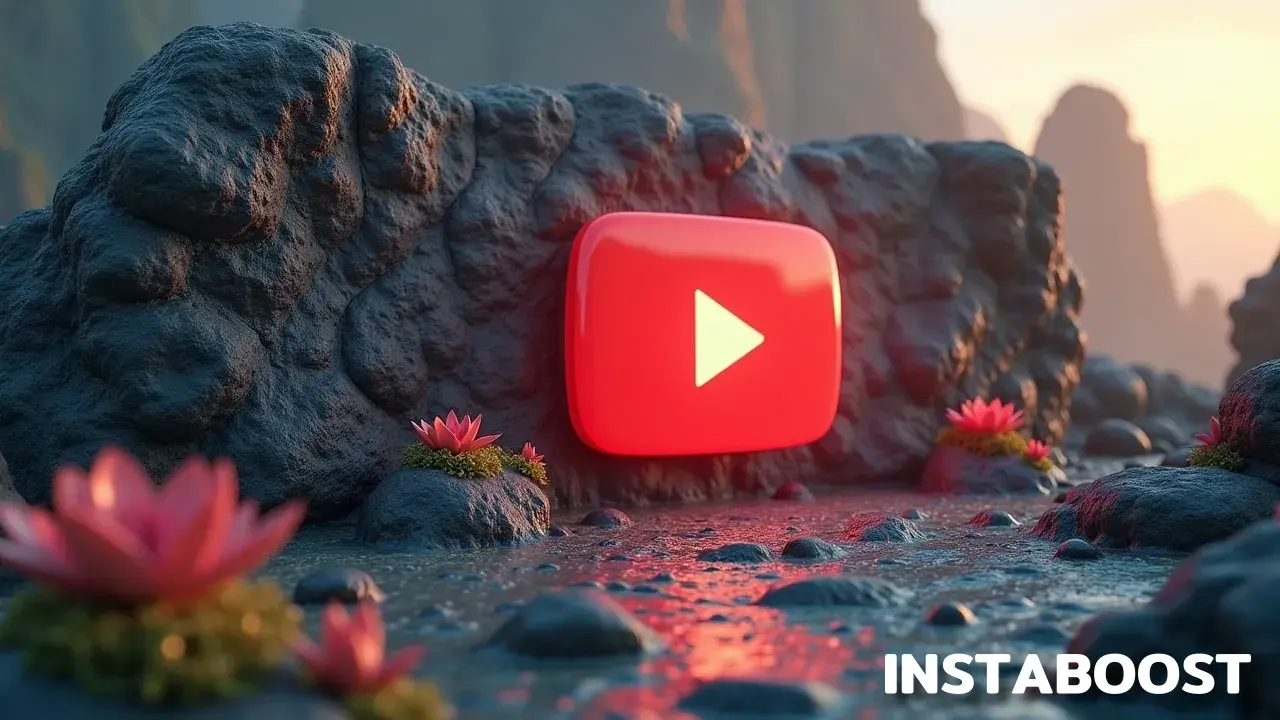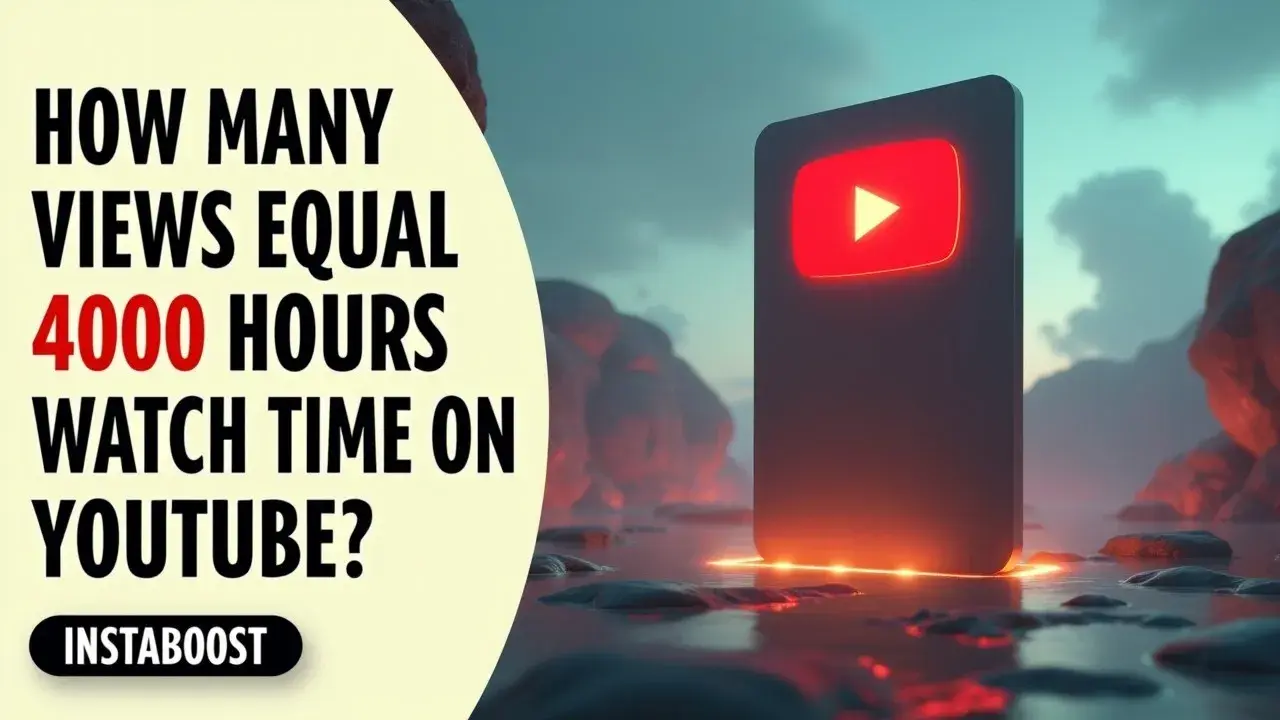How Many Views Equal 4000 Hours Watch Time on YouTube?
Watch time depends on average view duration, so required views vary by how long viewers stay. Short clips demand many more views, while longer, engaging videos accumulate hours faster. Map expected views to typical watch duration, track the first hour performance, and monitor watch time holds to refine pacing and topics. Consistent uploads compound small gains into steady progress toward the 4000-hour milestone, aligning content with audience intent for sustainable growth.
Why Watch Time Is the Real Lever Behind Monetization
Hitting 4000 hours isn’t about chasing a magic number of views. It’s about how well each view turns into minutes watched. Two channels can pull the same view count and land in different places because average view duration and retention do the heavy lifting. If a 6-minute video holds people for 4 minutes on average, you’ll need far fewer views than a 45-second Short that most swipe past in 10 seconds. The smart move is to match length to intent. Tutorials and deep dives bank time per click, while Shorts work when they trigger a binge that stacks sessions.
Early momentum matters too, because YouTube’s first-hour signals – click-through rate, watch time per impression, and held segments – help the system test your video with larger, better-matched audiences. You can accelerate responsibly with targeted promotion from reputable creators or niche communities, small-budget ads matched to query intent, and collabs that send primed viewers, all tracked with clean analytics, the same way you’d treat any plan to develop your YouTube channel as an iterative system rather than a one-off push. The metric to watch isn’t views alone but minutes per view and where viewers drop.
Tighten your hook, cut dead air, and lead with the payoff to raise retention. Real comments and engaged discussion signal relevance and can lift suggested traffic. If you’re planning growth toward monetization, set a testing loop. Publish consistently, read the audience retention graph, ship a revision or follow-up that addresses the exact dip, and measure the change in watch time, not just clicks. That’s how views turn into 4000 hours – design videos that earn time, then use qualified exposure to scale what already holds attention. For anyone searching “YouTube monetization requirements,” that’s the difference between guessing and engineering the milestone.

Proof That Minutes Matter More Than Views
Every channel has a fingerprint, and seeing it clearly changes how you work. If you’re trying to link views to 4,000 hours of watch time, start by baselining your own averages. Take your last 10 uploads, calculate average view duration, and treat that as your conversion rate. A channel running a 6-minute AVD needs roughly 40,000 complete-view equivalents to hit 240,000 minutes. A channel averaging 90 seconds needs 160,000. That’s not theory.
It’s math you can manage week to week. The credibility check lives in your retention curve. If you see clean holds at key moments – title promise delivered in the first 20 seconds, no dead air at minute two, clear payoff near the end – your AVD rises and the “how many views equal 4000 hours” question gets simpler. Pair this with qualified promotion that’s matched to intent – collaborations that fit the audience, targeted placements where the topic already trends, and community posts that seed early momentum. Real comments that reference specifics in the video are a signal YouTube can act on, and they often correlate with longer session time and more suggested traffic.
If you run paid accelerants, keep it reputable and measured; exclude low-quality inventory, cap frequency, and compare post-click retention to organic, because it only works when the audience you buy behaves like the one you keep, and beware services that sell vanity metrics, even if you might stumble across one like buy YouTube audience now. Build a tight testing loop. Publish on a consistent cadence, watch the first hour’s AVD and CTR pairing, then adjust packaging – thumbnails, titles, openings – before changing topics. Keep analytics clean as a safeguard. Separate shorts from longs, segment new vs. returning viewers, and avoid bundling experiments. When your input quality is this controlled, you don’t need a viral spike. You need repeatable minutes that compound until the milestone is inevitable.
Design Your Watch-Time Engine: A Repeatable System That Compounds Minutes
Content without direction is noise, even with good design. To turn views into 4,000 hours of watch time, build a simple operating system: one format, one hook pattern, one retention map, and one measured way to earn minutes. Start by pegging your baseline average view duration from your last 10 uploads. Treat that as your conversion rate from views to hours.
Then design for holds at the known drop-off points. Open with a payoff promise in the first five seconds, plant a mid-video curiosity gap before the average exit, and use visual resets every 20 – 30 seconds to refresh attention. Pair the creative with smart accelerants matched to intent. Targeted promotion aligned to likely viewers, creator collabs that borrow relevant audiences, and comment prompts that spark genuine discussion all send healthy retention signals to YouTube and compound distribution, just as tightening thumbnails and titles can grow your audience with more likes without distorting the core strategy.
If you use paid boosts, treat them like seasoning, not the meal. Buy from reputable inventory, throttle by geography and interest, and protect your data with clean analytics so you can isolate organic watch time. Upload on a consistent cadence and track first-hour retention, average percentage viewed, and session starts. Small improvements in AVD reduce the number of views required to hit the “how many views equal 4000 hours” math. The non-obvious edge is to script to a time target. If your natural AVD is four minutes, writing for a tight six to eight minutes with planned peaks often lifts absolute minutes watched without bloating. Each view banks more time while staying engaging, which is the fastest, most reliable path to monetization readiness.
Stop Chasing Viral; Engineer Accumulation
Somewhere out there, an influencer is promising you can post Shorts and magically turn views into 4,000 hours of watch time, as if minutes aren’t the currency. Here’s the reality. YouTube reads retention signals and session lift more than vanity spikes. If you’re mapping how many views equal 4,000 hours of watch time, you need a model that compounds minutes, not a lottery ticket. Shorts work when they ladder into mid-length anchors – think a 45 – 180 second clip that tees up a 6 – 12 minute video with tight pacing and a clear payoff. That pairing turns curiosity into dwell time, backed by real comments and creator collabs that show human engagement.
If you invest in targeted promotion, use reputable placements matched to audience intent, then read clean analytics: hold curves, CTR by surface, end screen click-through, and average view duration per source; even supposedly trusted YouTube video view service traffic should be pressure-tested against retention and downstream session lift. Low-quality traffic can drag your averages. Qualified discovery that matches topic and thumbnail promise lifts the conversion rate from views to hours. Set safeguards. Test hooks with small ad spends, cap frequency, and measure lift in suggested traffic, not just the campaign view count.
This isn’t anti-viral – it’s pro-system. Your baseline from the last 10 uploads is the conversion rate. Your operating system improves it: one format, one hook, one retention map. Run weekly iterations, prune underperforming intros, and build predictable session starts. That’s how steady views turn into minutes that stack, and how the search term “YouTube monetization requirements” becomes a plan instead of pressure – measured, compounding, and ready for the day those 4,000 hours unlock without crossing your fingers.
Turn Minutes into Momentum
This is the quiet pause between two deeper breaths. You’ve mapped how many views equal 4,000 hours of watch time, you’ve built a simple operating system, and now the lever compounds: publish, measure, adjust, repeat. The last move is orchestration. Pair each upload with one targeted promotion matched to viewer intent – a newsletter segment, a community post, or a small, reputable ad test – but only after the video earns healthy retention signals organically.
Keep analytics clean. Isolate sources, tag links, and track first-hour AVD against your last-10 baseline so you know what actually moved the minutes. Prime session lift with smart pairings – end screens that create a 1 – 3 video path, a pinned comment pointing to the next step, and a short follow-up that answers the top real comments to seed return visits. Collaborations work when audience overlap is clear and the format fit is tight. Trade intros, not identities, and measure watch time per impression, not subs alone; distribution echoes matter, including when third parties get discovered with more reposts and push viewers into your sequence unintentionally.
If you want acceleration, invest in qualified placements or YouTube ads optimized for watch time, not clicks, with safeguards in place – frequency caps, geos that match CPM goals, and a kill metric if retention dips below your threshold. The non-obvious insight is that the path to 4,000 hours isn’t a bigger net. It’s a narrower funnel with less leak. One format, one hook pattern, one retention map – expanded by one precise distribution habit you can run every week. Do this for eight to twelve uploads and the math shifts. Fewer views are required because each view banks more minutes. That’s how creators stop chasing viral and engineer accumulation, turning view counts into durable watch time and, eventually, reliable monetization.















